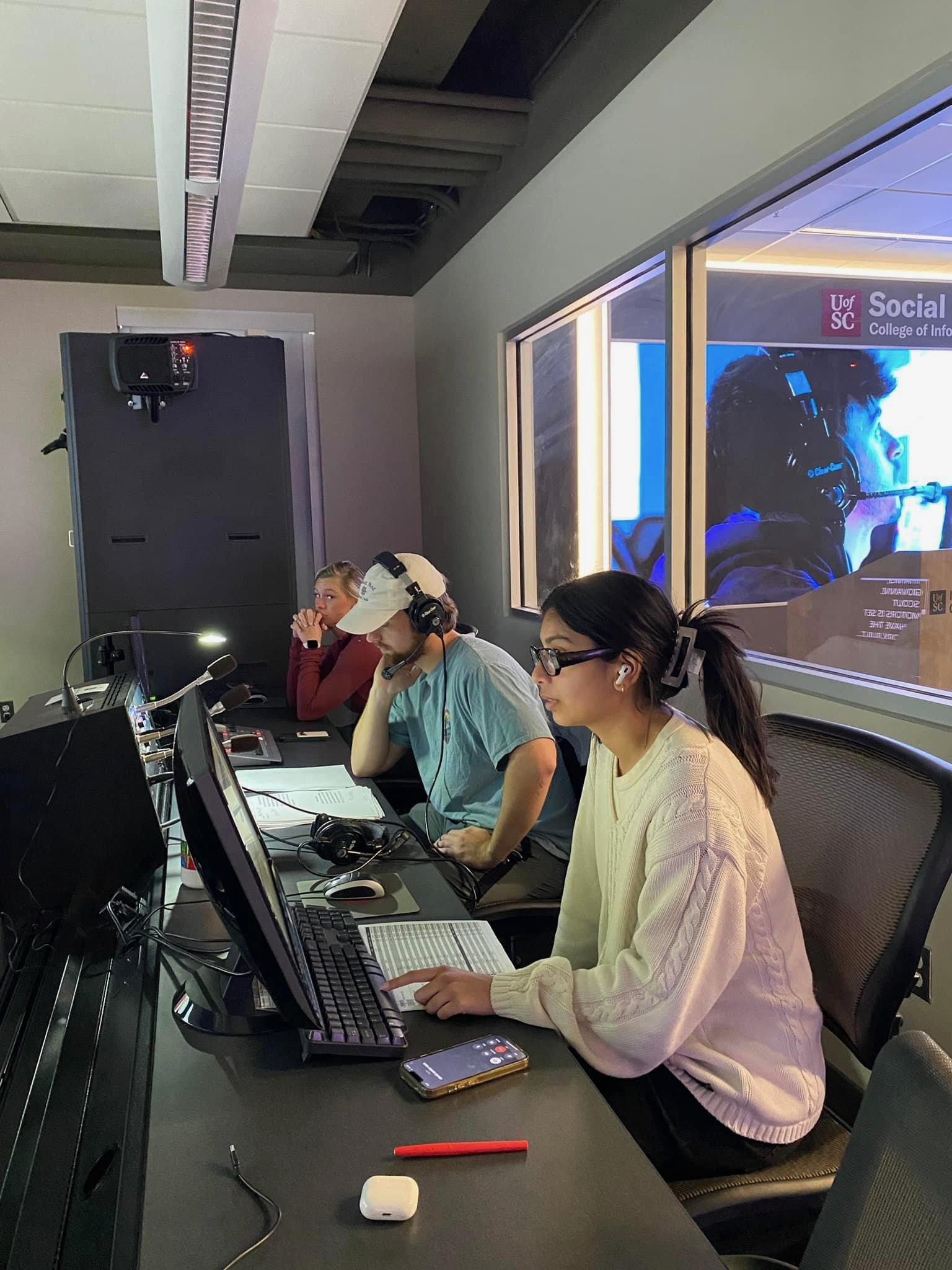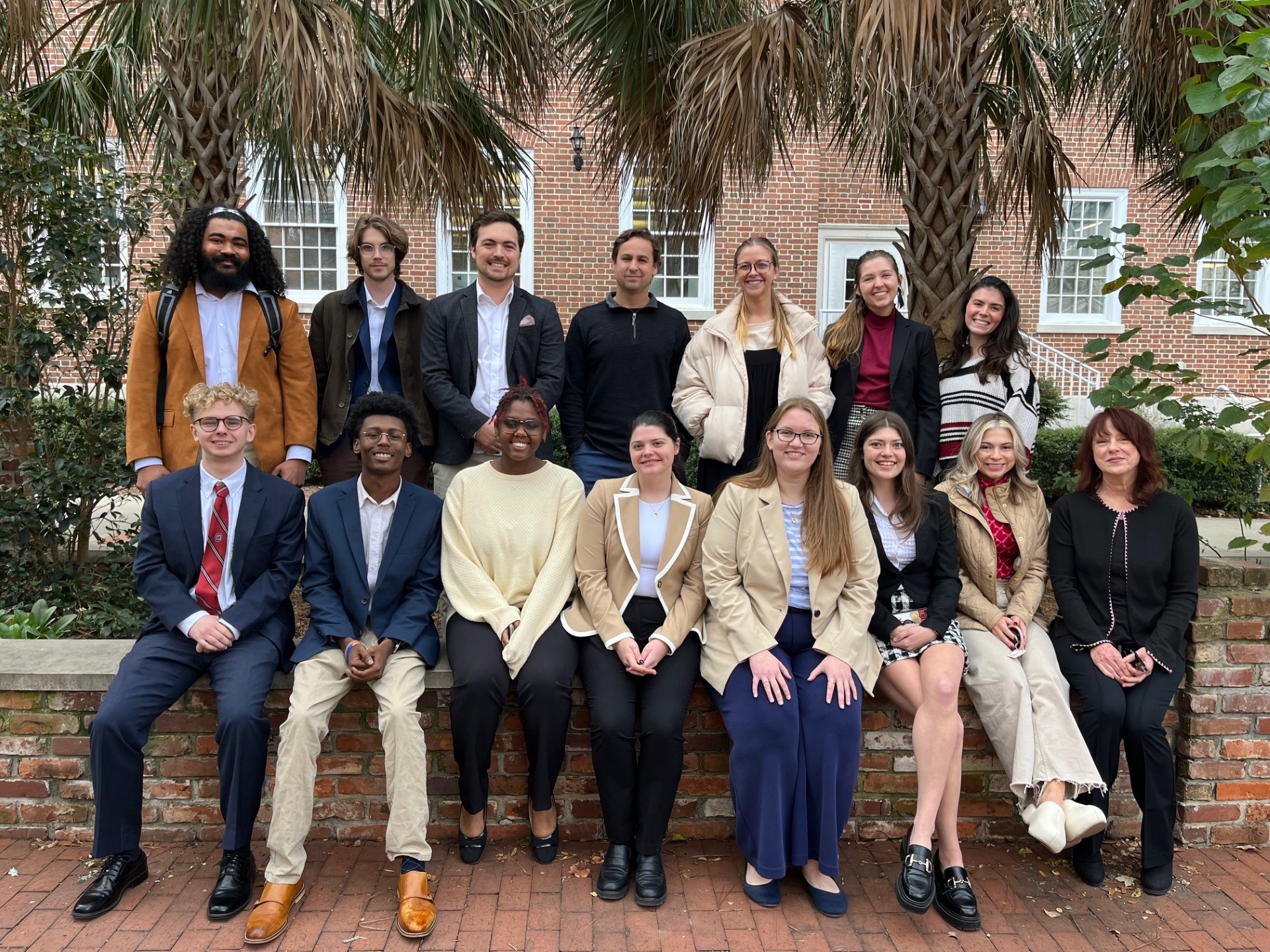By Alexa Lewis
When South Carolina Attorney General Alan Wilson called for the criminalization of AI-generated “child sex abuse materials” in 2023, University of South Carolina School of Journalism and Mass Communications' Brandon Shulleeta recalls one of his journalism students launching an investigative report.

The attorney general called for a national push for states to strengthen their hazy or nonexistent legislation surrounding AI-generated images. Through their research, Shulleeta's journalism student Claire Carter discovered South Carolina was among the states with unclear laws on the subject.
“Our reporter found that [South Carolina] didn’t really have statutes that make it clear that it’s illegal to create these fake images, even though they’re making this national push,” said Shulleeta. Exposing inconsistencies like these is a fundamental part of what University of South Carolina journalism students focus on during their senior capstone semester.
At the University of South Carolina, journalism students devote an entire semester to a capstone experience called “Senior Semester.” They spend this semester honing the professional skills they need to begin their journalism careers post-graduation in either a broadcast or multimedia news concentration. The pinnacle of this experience is the “in-depth story,” a long-form article that students create through investigative journalism.
The success of these stories is determined by “how much they’re offering the world that hasn’t been reported on yet,” said Shulleeta. “We used to just call them ‘long-form stories,’ but it didn’t send across the message we wanted. It’s not just about how long the story is.”

Student stories are published in the university-run Carolina News and Reporter; local newspapers also publish the articles, giving the students' writing a broader reach. The University of South Carolina also formed a partnership with South Carolina Public Radio, providing students an opportunity to have their stories broadcast in an audio format.
The capstone semester, which has been a staple of the university's journalism major for several decades, typically has between 25 to 50 students enrolled between two concentrations. Students in the broadcast concentration assemble two news shows per day, which air locally and online. In the multimedia concentration, students write daily news stories accompanied by photographs, short videos, or audio segments. Students report on a wide range of topics, but the South Carolina politics and legislation beat has become one of the most popular.
“Students are interested in covering things that are directly impacting the community around them,” said Shulleeta. “This year, we’re helping with some presidential race coverage, as well as other political coverage.”
Students in the program take the lead on deciding their story topics. In both the broadcast and multimedia concentrations, the classroom functions as a newsroom. The day typically begins with a student-led meeting. Each week, a different student takes on the role of “editor of the week,” and leads the meetings. Their classmates pitch stories and work on refining ideas.
 “Every Monday we have an ‘in-depth stories’ meeting,” said Shulleeta. “Students always come up with their own ideas, and they’re really the ones leading the way.”
“Every Monday we have an ‘in-depth stories’ meeting,” said Shulleeta. “Students always come up with their own ideas, and they’re really the ones leading the way.”
Last year, journalism student Madelyn Weston conducted research on teacher vacancies in a local school district for their “in-depth story.” Officials from the South Carolina Teachers Association and Education Association had been working with state legislators to address the growing number of teacher vacancies and departures throughout the state, but Richland County School District One stood out with regard to the number of mid-year transfers.
“The student found that this school district would often transfer teachers to other schools with just a few days’ notice,” said Shulleeta. When the student published this story in the Carolina News and Reporter, it was during a rush of breaking news stories from local media outlets detailing the situation at the school district.
“[The student] was able to top off the breaking news, and since they’d already been covering the issue long before, they came out with the most detailed coverage,” said Shulleeta. “I think successes like these have a lot to do with the great, experienced faculty we have here, and the nature of the program. I’ve talked with big journalism programs all over the country, and there’s nothing quite like what we have here.”

